Understanding FCS Fins: A Complete Surfing Guide
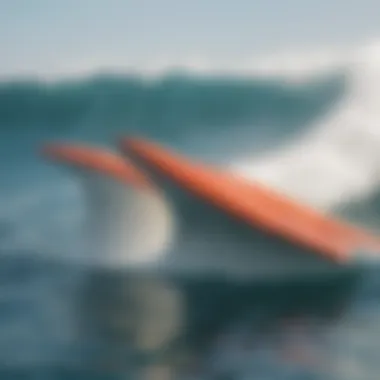
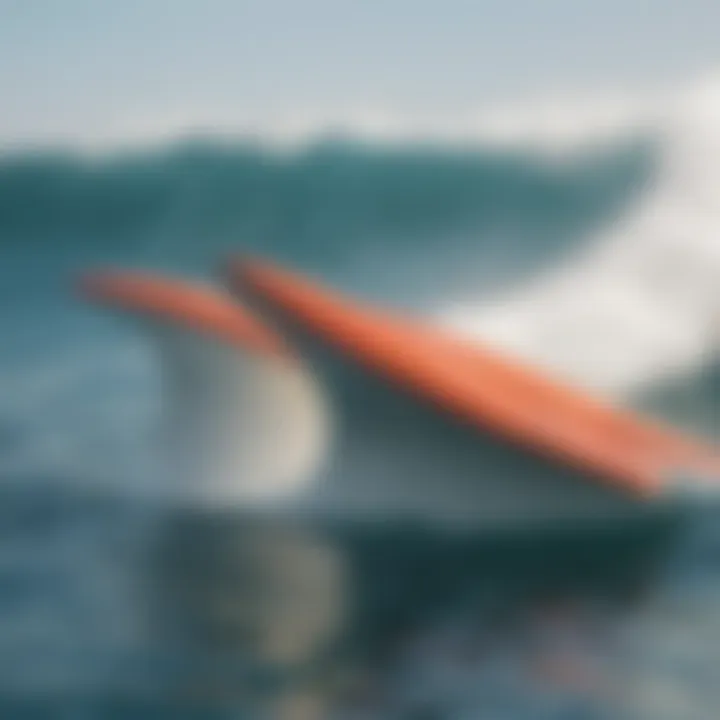
Intro
When it comes to riding the waves, the choice of fins can make or break your experience. FCS fins have carved out a niche in the surfing world, enhancing both performance and adaptability. No two surfers are alike, and that's where the beauty of FCS fins comes into play. They cater to various surfing styles, providing unique solutions to meet the diverse needs of surfers.
In this guide, we'll dive into the world of FCS fins, exploring their technical details, types, and the impacts they have on surfboard performance. Whether you just caught your first wave or have been carving up the ocean for years, understanding these fins is key to enhancing your ride.
Let's start off by looking at surfboarding techniques and how the right fin setup can improve your skills across various levels.
Surfboarding Techniques
Beginner Tips for Mastering the Basics
For those new to surfing, understanding how to select and use FCS fins can feel overwhelming. Here are some essential tips to help you get started:
- Choose the Right Fins: As a beginner, opting for stiffer fins may not be the best choice. Look for flexible ones. They offer more forgiveness and can help in maintaining balance while you're still finding your footing.
- Fin Placement Matters: Experiment with fin placements. The sweet spot often depends on your board's design and your weight. Starting with a standard setup and gradually tweaking as you improve can help.
- Practice Paddling: Before you even hit the waves, make sure to practice your paddling technique. A steady paddle allows better balance when you're trying to pop up on the board.
- Stay Relaxed: Tension can lead to mistakes. When you're out in the water, remember to breathe and stay calm, which will help your body respond better to the movements needed on the board.
Advanced Techniques for Seasoned Surfers
Once you’ve got the basics down, you may want to refine your technique and make the most of FCS fins. Here are some advanced tips:
- Adjust Fins for Conditions: Different conditions call for different fins. In choppy waters, certain setups, like thrusters or quad configurations, can provide greater stability.
- Experiment with Sizes: Larger fins can offer increased hold through turns but may slow you down. Small fins can give you speed but might sacrifice some stability. Play around to find your sweet spot.
- Incorporate FCS Two or FCS II Systems: Understanding the different FCS fin systems can lead to a more customized experience. The FCS II system allows for quicker fin changes and may yield better results in varying surf conditions.
- Tweak the Angle: Changing the angle of the fins can significantly affect your ride. A more upright fin can give sharper turns at the expense of speed, while an angled fin may enhance drive on long waves.
"Choosing the right fin setup can transform your surfing experience, leading to better performance and enjoyment in the water."
Surfboard Equipment
In conjunction with understanding FCS fins, knowing the surfboard equipment essentials is crucial.
Reviews of the Latest Surfboards on the Market
When shopping for a new board, consider the following factors:
- Material Composition: Boards made of epoxy tend to be lighter than traditional polyurethane boards. Epoxy boards are more durable, making them a good investment for every surfing enthusiast.
- Board Shape and Size: From longboards to shortboards, each shape offers a different ride. Assess what you feel comfortable with, keeping in mind your style and the waves you wish to conquer.
Essential Gear for Every Surfboarder
- Wet Suits: Always have a quality wetsuit on hand for those chilly water sessions. Look for one made of quality neoprene to keep you warm.
- Wax and Repair Kits: A good wax setup can enhance grip on the board. Additionally, a quick repair kit for dings ensures you’re not caught off guard if the board suffers damage in the water.
- FCS Fin Key: Always carry an FCS fin key for easy adjustments on the go. This small tool can save you a lot of hassle mid-session when a fin needs tightening or swapping.
Understanding the nuances and significance of FCS fins is not just about enhancing performance—it's a vital component of the overall surfing experience. Embracing the multifaceted world of fins and surfboard equipment can undoubtedly elevate how you engage with the ocean.
Keep this guide handy as you embark on your surfing adventure, making informed decisions about your gear for a smoother journey through the waves.
Understanding FCS Fin System
The FCS fin system plays a pivotal role in the performance and versatility of surfboards, making it an essential topic for anyone keen on surfing. The right fins can influence a surfer's ability to maneuver, maintain speed, and execute complex tricks. Understanding how this system works can empower surfers, instructors, and designers alike, helping them make informed decisions concerning gear and performance.
History of FCS
The FCS (Fin Control System) brand emerged in Australia during the late 1980s. Surfing was evolving, and there was a growing need for a more adaptable fin system. Traditional single fin setups restricted versatility, leading to the birth of FCS. John and his brother adopted a new idea allowing surfers to easily switch fins without needing a major overhaul of their equipment. The first FCS product was a durable plastic plug that allowed the fin to attach and detach with ease. Quite revolutionary, FCS fins provided surfers with the flexibility to tweak their setup based on the surf conditions, personal preferences, or even different board types.
Over the years, FCS has consistently updated its designs, embracing new materials and technology. The introduction of the FCS II system simplified the process even further. Unlike its predecessor, FCS II lets surfers install fins without tools, a small yet significant change that made a world of difference in user-friendliness. There’s a good reason FCS has become the industry standard. Its legacy isn't just about fins; it’s about adaptability and usability that resonates with surfers from all walks of life.
Design Philosophy
The design philosophy behind FCS fins revolves around enhancing functionality while keeping the surfer's needs at the forefront. FCS has always believed that a surfer should never feel restricted by their equipment. The fins are built to be high-performing, easy to install, and versatile, catering to a multitude of surfing styles and board types.
FCS fins come in various shapes and sizes, created meticulously to affect hold, speed, and pivot. For instance, a larger surface area typically translates into more drive and stability, while smaller fins may allow for quicker turns and more fluid maneuvers. This means that surfers can establish their preferred ride based on personal style, enabling a deeper connection with the ocean in their pursuit of riding waves.
FCS also prioritizes environmental awareness in its design. As the surfing culture becomes more eco-conscious, the brand has been engaged in exploring sustainable materials and production practices. This commitment not only reflects a growing demand but also aligns with a broader understanding of the interconnectedness between surfing, ocean health, and responsibility toward our planet.
In summary, comprehending the FCS fin system is not merely about knowing how to attach fins; it is about grasping their historical significance and the thoughtful design that goes into creating each fin. This understanding allows surfers to maximize their experience on the water and embrace their style more fully.
Types of FCS Fins
Understanding the types of FCS fins is essential for any surfer looking to fine-tune their riding experience. Each fin type offers distinct advantages and caters to different surfing styles, which directly impacts how a board performs in the water. Knowing the nuances of these setups can empower you to make informed choices, whether you're paddling out on a mellow day or tackling bigger swells.
Thruster Setup
The thruster setup comprises three fins: one center fin and two side fins. It’s one of the most popular configurations amongst surfers for good reason. The tri-fin design facilitates greater speed and stability, making it particularly effective for executing sharp turns and maintaining control when navigating waves.
Surfers often appreciate the balance that thruster fins provide. With two side fins contributing to lift and a center fin adding stability, this configuration seamlessly integrates speed, maneuverability, and control.
Benefits of the thruster setup:
- Enhanced maneuverability: The two side fins support braking and turning without losing speed.
- Versatility: Works well in a variety of wave conditions, from small to overhead.
- Stability: Ideal for maintaining control in choppy waters.
The versatility of the thruster system truly shines across various conditions. Whether you're carving through a hollow left or working on your bottom turn, thrusters will meet your needs.
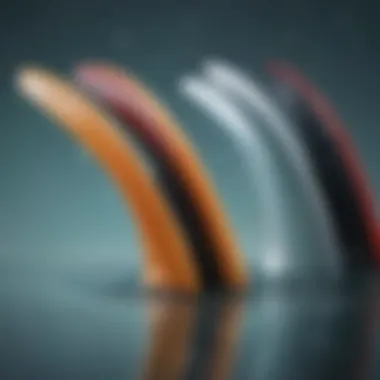
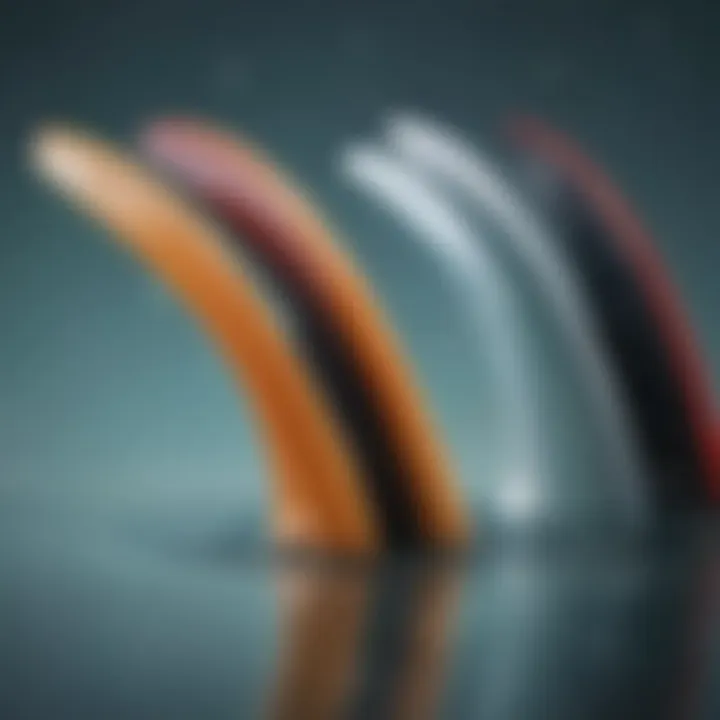
Quad Setup
The quad setup consists of four fins—two on each side—that allow for a different kind of performance analysis when compared to the thruster. This fin arrangement is particularly attuned to speed and flow, making it a cherished choice for surfers who enjoy fast, open-faced rides. The quad's design promotes stability while enhancing acceleration, especially suited for bigger, more powerful waves.
One aspect to consider with quads is that they offer a smoother, more fluid ride. The extra fin, combined with their positioning, generally leads to a looser feel, allowing for dynamic, high-speed maneuvers.
Benefits of the quad setup:
- Speed: The additional fins reduce drag and increase glide, allowing for rapid travel across the water.
- Fluidity: This setup promotes quicker turns and more adjustability during your ride.
- Enhanced performance in bigger waves: The extra stability lends itself well to powerful surf conditions.
When tackling larger swells, striving for a quad fin setup can serve you well, as it dramatically changes how your board interacts with the sea.
Twin and Single Fin Options
The twin fin and single fin setups focus on simplicity and serve specific surfing styles that prioritize flow and maneuverability over sheer speed. Twin fins, characterized by their two fins positioned close together, tend to offer a lively ride marked by easy rail-to-rail transitions. This configuration excels in smaller, more playful waves, where the aim is to surf with finesse and creativity.
Similarly, the single fin setup offers a more traditional surf experience, emphasizing smooth carving and stability. Commonly found on longboards, this setup allows for a graceful, flowy style of riding that smaller fin configurations may not achieve.
Benefits of twin and single fins:
- Twin fins: Ideal for smooth directional changes and fast pivots, making it easier to navigate through softer waves.
- Single fins: Offer a classic surfing experience, ideal for making big, sweeping turns and showcasing your style.
Both twin and single fin setups grant you the freedom to explore your unique surfing approach. The preference for these types often influences riding style more than performance metrics alone, making them a favorite amongst surfers who revel in artistic expression on the waves.
"Choosing the right fin configuration is like selecting the right brush for a painting. It shapes your experience and defines your unique style on the canvas of water."
Diving into the various types of fins available not only enhances your performance but also enriches your overall surfing experience. Each setup serves its purpose and allows for a tailored approach to the diverse conditions you might encounter in the water.
Material Considerations
When it comes to FCS fins, material selection plays an instrumental role in their performance, durability, and overall functionality. Not only do different materials provide varying levels of flex and stiffness, but they also affect the board's handling characteristics in the water. By understanding the different types of materials available, surfers can make more informed decisions about which fins will best suit their personal styles and conditions.
Fiberglass Fins
Fiberglass fins are often regarded as the gold standard in performance. Typically handmade, these fins possess a unique combination of stiffness and flex that many surfers appreciate.
This craftsmanship allows for fine-tuning in terms of responsiveness and durability. Many professional surfers swear by fiberglass for its ability to maintain shape under pressure while offering just the right amount of give during turns, thereby enhancing maneuverability.
Advantages of Fiberglass Fins:
- Customizable shapes: Can be tailored to specific surf conditions or personal styles.
- Durability: Resistant to dings and breakages when proper care is taken, making them an excellent investment.
- Performance: Superior control and response when carving through waves.
Fiberglass can also be painted or finished in various colors, allowing for personal expression on the water.
Plastic and Composite Fins
Plastic and composite fins are seen as the more budget-friendly options, making them a common choice for novice surfers or those who prefer a casual surfing experience. While they may lack some of the refined performance characteristics of fiberglass, they offer benefits that are hard to ignore.
They are typically lighter and provide good performance in small to moderate surf, which can be a significant advantage for beginners still getting comfortable on a board. While they might not flex as finely as their fiberglass counterparts, they deliver solid all-around performance.
Key Features of Plastic and Composite Fins:
- Affordability: Much cheaper than fiberglass, making them accessible for all budget ranges.
- Maintenance: Less susceptible to wear and tear, so they often require less frequent replacements.
- Performance in small waves: Generally provide adequate handling in smaller surf conditions.
However, it is essential to note that, with time, plastic fins can become brittle due to prolonged exposure to sun and saltwater.
Eco-Friendly Alternatives
With increasing awareness of environmental issues, eco-friendly fins have emerged as a compelling choice. Made from sustainable materials or processes, these fins provide an option for conscious surfers who want to minimize their impact on the ocean.
Many companies are now producing fins from recyclable materials or bio-resins, which are designed to break down naturally at the end of their lifecycle. By choosing eco-friendly alternatives, surfers contribute to a larger sustainability effort, impacting positively on marine life and surf culture.
Benefits of Eco-Friendly Fins:
- Sustainable Production: Often made with processes that aim to reduce waste and pollution.
- Recyclability: Many models can be reprocessed at the end of their usefulness, preventing unnecessary waste.
- Awareness: Choosing these products often reflects a commitment to environmental conservation, resonating well with fellow surfers and communities.
As we take a closer look at the material considerations behind their fins, it’s essential to understand not only how these options perform but also how they align with an individual's values—particularly for those who cherish our oceans and the sport of surfing.
In our continued exploration of FCS fins, keep in mind that material choice significantly influences both performance and long-term durability.
Each surfer's choice in material needs careful thought, aligning with personal style, environmental considerations, and performance demands.
Choosing the Right Fins
Selecting the right fins for your surfboard can significantly influence your performance in the water. The decision doesn’t just revolve around aesthetics; it’s about enhancing your surfing experience and adapting to your unique style. Understanding how fins affect speed, stability, and maneuverability is essential for anyone serious about surfing.
Assessing Your Surfing Style


Every surfer has a distinct style, shaped by personal preference and experience. For instance, if you lean towards aggressive turns and powerful movements, a fin setup that provides stability and drive will serve you well. On the other hand, if you enjoy cruising with smoother, more fluid maneuvers, consider a fin that promotes flexibility and responsiveness.
To determine your style, reflect on the types of waves you enjoy riding:
- Power surfers may favor thruster setups, which offer a balanced mix of speed and control.
- Sliders can benefit from a twin fin setup, allowing for loose, skate-like turns.
An important aspect to remember is how board dynamics change with different fin sizes and shapes. Larger fins can provide more grip, while smaller fins might enhance drift and looseness in your turns. Getting a clear understanding of your surfing technique will position you to select fins that complement your approach in the water.
Matching Fins to Board Type
Different surfboards are designed with specific uses in mind, and matching fins to your board is crucial for achieving optimal performance. A fin that works perfectly on a shortboard might be less effective on a longboard. Here’s a quick breakdown:
- Shortboards generally pair well with thruster setups, giving you the sharp turns and responsiveness needed in critical conditions.
- Longboards often find harmony with single fins, offering a smooth ride and enhanced glide.
When matching fins to your board type, consider the following:
- Volume of the Board: A heavier board may require larger fins for stability.
- Shape and Tail Design: Boards with different tail shapes can affect how fins interact with water, altering performance dramatically.
Choosing fins that align with your board’s design will lead to improved control and maneuverability in the waves.
Experimentation and Customization
The world of surf fins is vast and constantly evolving. Don’t be afraid to try different setups—what works for one surfer might not work for another. The beauty of surfing is the freedom to experiment. Start by tweaking fins incrementally, either by changing sizes or types.
Here are some practical tips on customization:
- Test Various Fin Configurations: Even a slight change in fin setup can alter the ride drastically. Exchange a rear fin for a larger one and see how it feels.
- Attend Local Surf Gatherings or Shops: Engage with fellow surfers. Many are happy to share their experiences and insights on what fin setups have worked best for them.
"Fins are like shoes for your surfboard—one size doesn't fit all!"
The goal is to find that right balance that enhances both performance and enjoyment. Dive into this adventure of exploration with an open mind, and you may just discover the ideal combination that makes your time in the water that much better.
Installation and Maintenance
Proper installation and maintenance are cornerstones of maximizing the performance and longevity of FCS fins. Any wise surfer knows that a finely tuned setup can make all the difference in how a board rides through powerful waves or performs in calmer conditions. Just like a singer requires a well-tuned guitar, a surfer demands the same precision from their fin setup.
With the myriad of types and configurations available, understanding the installation process becomes crucial. It ensures that the fins not only fit securely but also perform as intended. Additionally, regular maintenance rounds out the picture, helping to preserve the quality and integrity of both your fins and surfboard.
Proper Install Techniques
Installing FCS fins might seem straightforward, but it requires attention to detail to ensure everything aligns correctly. First, ensure that the fin boxes are clean and free from debris. This prevents any misalignment that could affect performance.
- Inspect the Fins: Before installation, examine the fins for any cracks or wear. A compromised fin can lead to disastrous consequences.
- Align Accurately: Insert the fins into the boxes, making sure they are straight. Unlike putting together a jigsaw puzzle, this is not about forcing pieces together but ensuring a snug fit.
- Screw Technique: When securing the fins with screws, avoid overtightening. Think of it as fastening a delicate piece of jewelry; too much pressure might create unnecessary stress, risking damage.
Some surfers employ a bit of wax on the threads of the screws to ease the installation process and provide a tighter grip. In some circles, it’s considered an old school trick, but a good one nonetheless.
Regular Maintenance for Longevity
Keeping your FCS fins in tip-top shape requires a bit of effort, but it’s well worth it. Regular maintenance not only boosts performance but also prolongs the life of your fins.
To maintain the fins, consider the following tips:
- Rinse After Use: Always rinse your fins and board in fresh water after surfing. Saltwater can corrode metal screws and cause degradation, leading to potential failures on the wave.
- Dry Properly: Make sure your fins dry completely before storing them. Leaving them wet can lead to mold and deterioration of the materials, especially for those made from fiberglass or eco-friendly alternatives.
- Weekly Inspections: Make it a habit to check for chips, cracks, or any signs of wear at least once a week. Like checking your car’s oil, this simple practice can catch issues before they become catastrophic.
"Taking care of your fins can be the difference between catching that epic wave or just belly-flopping in the water. It’s the little things that count."
In summary, the relationship between installation and maintenance is pivotal in honing your surfing experience. With a bit of care and knowledge, surfers can ensure that their FCS fins will perform at their best for countless sessions ahead.
Performance Analysis
Understanding performance analysis within the context of FCS fins is crucial for surfers looking to maximize their experience on the water. This section delves into how various fins affect the handling, speed, and overall responsiveness of the surfboard. By analyzing performance, surfers can tailor their fin choices to align with their specific needs, ensuring that they can ride the waves with confidence and skill.
Testing Fins in Various Conditions
Testing fins across different wave conditions allows surfers to gain insights into how various shapes and sizes perform. For instance, what works well in mellow beach breaks might not cut it in heavier, hollow waves. Here’s a breakdown of how to approach this:
- Small, Choppy Waves: In such conditions, you might want to opt for wider fins that offer stability. They help in maintaining control, allowing for smoother turns.
- Steep Faces: Narrower fins generally provide a sharper pivot. They enhance maneuverability, vital when you are surfing steep waves.
- Powerful Conditions: In powerful surf, having flexible fins could be beneficial, providing added responsiveness during aggressive turns.
Testing should be a continuous part of the surfing journey. Several surfers advocate for a session dedicated to trying out different fins, documenting how each set affects their ride. By conducting these tests, you stand to learn crucial nuances about what works for you.
Impact of Fin Shape on Performance
The shape of the fin plays a pivotal role in dictating performance. Each style offers distinct benefits that can influence your ride. Here are key features to consider:
- Daggerboards vs. Raked Fins:
- Base Width and Height:
- Foil and Flex:
- Daggerboards typically offer straight-line speed, making them great for catching waves early.
- Raked fins facilitate smoother turns, creating a drift-like effect which is ideal for more fluid movements in the water.
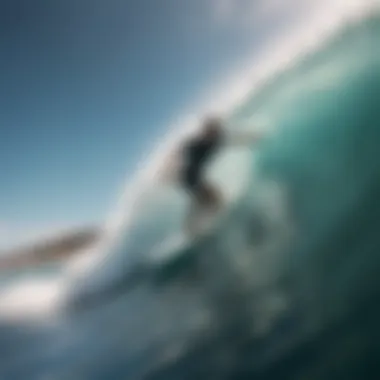
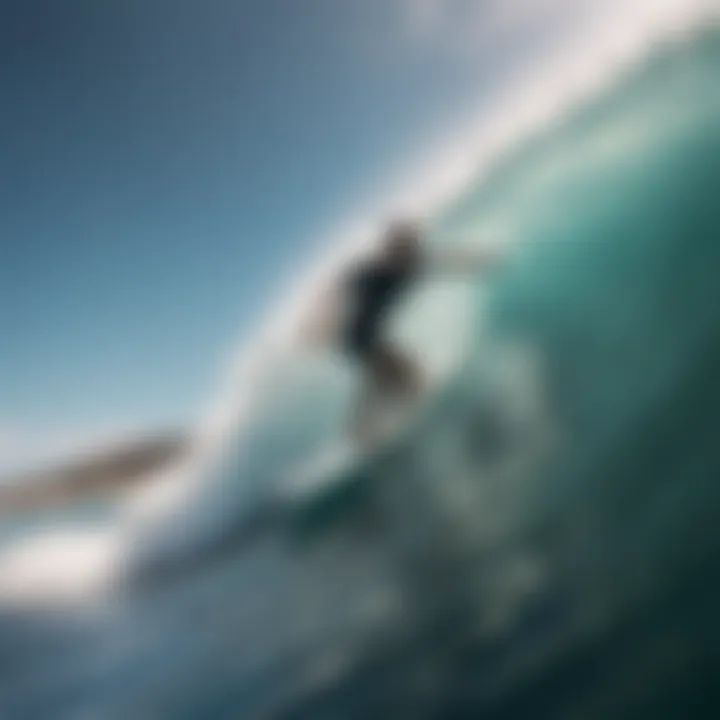
- A wider base generally improves drive and speed, which is beneficial in fast sections of a wave.
- Taller fins can provide increased lift, helpful in carving out sharp turns or accelerating out of turns.
- The foil refers to the curvature of the fin and affects water flow. A symmetrical or flat foil is often used for speed, while a more pronounced curve helps with maneuverability.
- Flex is about how much the fin bends under pressure. Fins with more flex can provide a "spring" effect that might enhance turns but may reduce overall speed.
Ultimately, selecting the right fin shape can significantly shape your surfing experience.
By being aware of these aspects, surfers can make a conscious decision regarding their fin setups, aligning them closely with their surfing style and the conditions they encounter.
The End
In performance analysis, understanding the varied influences of fin testing and shape can tremendously elevate a surfer's potential. Balancing these factors ensures a tailored approach that ultimately enhances enjoyment and efficiency out on the waves.
Eco-Conscious Considerations
In today's world, where environmental crises loom large, the surfing community finds itself at a unique crossroads. The impact of surfboard fins on the environment is a pressing concern that cannot be overlooked. As surfers, we not only enjoy the waves but also interact intimately with the ocean, making it imperative to address how our gear affects the ecosystems we hold dear. This section delves into the eco-conscious considerations surrounding fins, highlighting the importance of sustainable practices in both production and disposal.
Sustainability in Fin Production
The journey towards creating sustainable fins starts long before they reach the water. Many manufacturers are adopting eco-friendly materials and methods in production, acknowledging that the surf industry bears responsibility for its environmental footprint. Using recycled materials is becoming more prevalent. For example, brands are exploring the use of recycled plastics and even bio-resins that minimize harm during production.
- Benefits of Sustainable Production
- Reduces reliance on virgin materials
- Lowers carbon emissions associated with manufacturing
- Contributes to a circular economy
More than just the use of alternative materials, sustainable practices in fin production also encompass ethical labor practices, ensuring that those who manufacture these essential components are treated fairly. It’s vital that surfing enthusiasts support brands that demonstrate a commitment to both the planet and people.
Recycling Old Fins
With new innovations emerging, it’s easy for surfers to get caught in the cycle of buying the latest gear. Unfortunately, this often leads to old fins being tossed aside without a second thought. Awareness is key when considering the fate of these fins. Many plastics and composites are not biodegradable, contributing to the mounting waste problems in our oceans.
The good news is that recycling programs are surfacing in various locations. Surfers can often return their old fins to designated shops or programs. This process helps keep plastic waste from polluting our beloved beaches and marine environments.
"Recycling each part of surf gear can contribute to a healthier ocean, which is where we all want to be."
- Ways to Recycle Fins
- Participate in local upcycling initiatives
- Mail fins back to manufacturers that offer recycling programs
- Repurpose old fins into art or home decor projects
By understanding both the production and disposal aspects of fin usage, surfers can make choices that respect the waves, ensuring that we care for the oceans that give us so much joy. It’s not just about catching the next big wave; it’s about leaving the ocean better than we found it.
As the demand grows for eco-conscious products, the push towards greener solutions within the surfing industry is not merely a trend—it’s a necessity. Awareness and actions today can foster a sustainable future for surfing, paving the way for generations of surfers yet to come.
Emerging Trends in Fins Technology
The surf industry is always shifting gears, with innovations popping up in a bid to improve performance and environmental impact. Emerging trends in fins technology showcase a blend of creativity and practical application. This section dives into two standout areas: smart fins and new manufacturing techniques. Both elements are geared towards enhancing surfing efficiency while being mindful of our planet. Let's unravel these intriguing advances.
Smart Fins
Smart fins represent a significant leap forward in surf technology. No longer just a piece of molded plastic or fiberglass, the latest smart fins incorporate sensors and data analytics to provide surfers with real-time feedback about their performance. These fins can measure diverse parameters such as speed, angle, and even wave conditions.
Imagine paddling out and having your fins relay information to your smartphone. This data can help riders tweak their technique and optimize their style. While this tech might sound a bit sci-fi, it has practical applications for surfers looking to improve every aspect of their game. It's like having a personal coach right under your feet.
Moreover, this tech might lead to better understanding of how different fin shapes and materials affect overall performance. The insights gained from smart fins could revolutionize how fins are designed in the future, making them more tailored to specific surfing styles. However, as exciting as this sounds, there remains a consideration of battery life and ruggedness. Surfers need gear that can withstand the sea’s elements—not something that fizzles out after a day on the waves.
New Manufacturing Techniques
When it comes to the production of fins, new manufacturing techniques are taking center stage. Traditional methods have their merits, but the latest approaches focus on precision and sustainability—two fundamental elements in today’s market.
For instance, 3D printing has emerged as a game-changer in fins production. This method allows for intricate designs that can enhance aerodynamics and hydrodynamics, leading to finer-tuned performance without excess material waste. Furthermore, it permits easy customization. Surfers can now print fins tailored to their specific requirements. Imagine fin options that adapt to your surfing conditions—this technology makes that a reality.
Additionally, the incorporation of eco-friendly materials is gaining traction. Bioplastics and recycled materials are now being employed, reducing the carbon footprint of fins manufacturing. As consumers become more eco-conscious, manufacturers face the challenge of meeting these demands while ensuring quality and performance. It's an ongoing balancing act.
"Innovation in surf fin technology not only shapes the way we ride the waves, but also how we care for our planet."
Culmination
In wrapping up this exploration into FCS fins, it becomes evident that understanding these components is crucial for any surfer, seasoned or novice. The role of fins in surfboard performance cannot be overstated. They influence speed, maneuverability, and stability, directly impacting how one experiences the ocean's waves. As we've delved into various types of fins and the materials they are made from, it’s clear that there is no one-size-fits-all approach. Different surfing styles demand different fin configurations, and the choice of material can make a significant difference in both feel and durability.
Moreover, we touched upon the increasing importance of eco-conscious choices in the surf industry. As awareness grows regarding environmental impacts, the popularity of sustainable materials in fin production is likely to rise. Choosing the right fins goes beyond performance; it also encompasses responsibility towards our planet.
A well-informed surfer equipped with the right knowledge can navigate through the myriad of options available, ensuring a customized surfing experience that resonates with their unique style.
"Choosing the right fins is like finding the perfect partner; it’s all about chemistry, compatibility, and passion for the waves."
Key Takeaways
- Fins are vital for performance: They determine speed, control, and responsiveness.
- Variety matters: With thruster, quad, and single fin options, it's important to consider your surfing style.
- Material choice impacts experience: Fiberglass, plastic, or eco-friendly alternatives can change how fins perform.
- Compatibility is key: Matching fins with your surfboard type maximizes your surfing potential.
- Environmental considerations: Sustainability in production is becoming increasingly relevant in fin selection.
Future of FCS Fins
As we look towards the future, it's crucial to acknowledge the advancements in technology shaping the world of surf fins. The introduction of smart fins shows tremendous promise. These are not merely accessories but high-tech components that can provide real-time feedback on performance, adjusting to changing conditions as you ride. Imagine fins that adapt to your surfing style and environmental factors, enhancing the overall experience.
Additionally, we will likely see more innovations in sustainable materials. With ongoing research, we might encounter bio-based plastics or recycled materials that can maintain high performance without sacrificing environmental integrity. The fusion of performance and eco-consciousness will likely sculpt the surf culture of tomorrow.















